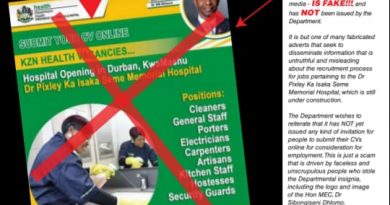Know more about chronic illnesses and medical aids
Being diagnosed with a chronic illness is challenging and you’re about to change your entire lifestyle in order to manage this illness. You’re also about to see more doctors, specialists, undergo tests and start taking medications than you’ve ever had to do before. Consequently, your medical bills are going to rack up rather quickly. But if you have a hospital plan or medical aid, they should be able to assist in the financial department regarding your chronic illness.
Every medical aid scheme has their own terms, conditions and fine print that medical aid members don’t always read or know about. And it can become tricky when you find yourself recently diagnosed with a chronic illness to make sure you’ll be covered for everything you need.
Even when you’re with one of the top five medical aid schemes in South Africa, you need to know about medical aids and how they approach chronic illnesses, for your own benefit.
Know the PMBs
All medical aid schemes in South Africa are required to provide the Prescribed Minimum Benefits (PMBs) to their medical aid members. And you need to make sure that the medical aid plan you’ve chosen does, indeed, cover those procedures and conditions.
The point of the PMBs is so that every South African with a medical aid plan has access to these health services at no co-payment or personal cost to them. Every medical scheme plan is supposed to be bound by the Medical Schemes Act to provide these minimum benefits regardless of the plan they’re on.
The costs that are covered by the PMBs of a medical plan include:
- Emergency medical conditions: These are for health conditions that are unexpected and rather suddenly require treatment or an operation for survival. If this emergency can lead to severe damage or death without immediate treatment, then it is usually diagnosed as a PMB. A medical scheme will, however, require a diagnosis before they approve treatment (unless the medical professional highly suspects it as a PMB condition during the patient’s admission, in which case medical aid would have to approve).
- Medical conditions: There is a list of 270 Diagnosis and Treatment Pairs (DTPs) that fall under the PMBs. These 270 conditions are divided into 15 categories. The DTPs link a diagnosis to a treatment, which means they’re included in the medical cover too. One should keep in mind that PMBs are based on the diagnosis and not the means to which you got the condition.
- Chronic conditions: The list of 25 chronic diseases that fall under the PMBs also specify medication and treatment for each condition. But not every possible chronic condition is on this list and just because it is on the list, doesn’t mean you’ll receive cover without a fair share of admin.
When it comes to PMBs, make sure you are aware of any requirements or exclusions. For example, with some medical aid schemes, they will require that you be diagnosed and treated by a designated service provider. You should also be aware that the entitlement to PMBs in unclear circumstances will be based on protocols from the public sector or evidence-based medicine.
Expect to undergo tests
When you are diagnosed with a chronic condition, you’ll likely be required to undergo a range of tests and medical examinations to confirm your condition and approve a course of treatment and/or medication.
This might entail numerous doctors visits, a few days in the hospital and a prescription for medication that can cost as much as your monthly petrol bill, if not more. All of these examinations and activities should be covered in full by your medical aid unless your diagnosis hasn’t been confirmed, your chronic illness is not part of the PMBs chronic diseases list or your treatment isn’t the part of the standard PMBs treatment recommendations.
In that case, you might be liable to pay upfront and hope to claim back from your medical aid at a later stage. You need to be prepared for the wait on your medical aid and the possible extra costs that will slip through PMB cover.
Consider supplementary cover
Once you’ve been diagnosed, your life stumbles a bit and you need to start taking daily medication, undergo treatment, cut out “triggers” from your life, change your diet and most of your lifestyle. The most important change being your medication and treatment which you start from day one.
As we mentioned, there are cases where the medical aid scheme won’t pay upfront for your medication and it becomes a cost you need to undertake. No one really prepares to be diagnosed with a chronic condition, but everyone should be prepared for a medical emergency in more ways than just a medical aid plan. Medical aid can cover many medical expenses, but they won’t always cover everything.
For this reason, you should consider taking out a supplementary cover for your medical expenses. A gap cover or health insurance policy are examples of supplementary cover that might help during the waiting period and throughout your life in the event complications or further procedures are required that your medical aid might not approve.
Chronic illnesses need to be treated and, in that way, can be managed to give you a chance at a relatively normal life. Make sure your medical aid steps up when you need it to and make sure you’re emotionally, physically and financially prepared for the journey ahead.




